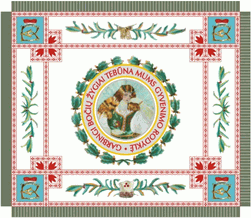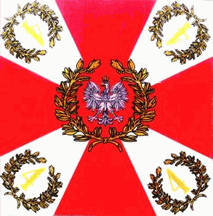Note: If an image ever fails to appear - refresh your page, it really is there
The Flags of the Poles and Poland - Part 4
1999 to Present
| Top of Page | Medieval Poland 900 to 1599 | 17th and 18th Century Poland 1600 to 1795 |
| Alliance of the Three Black Eagles (Poland Partitioned) 1795 to 1807 | Napoleonic Era and Poland 1807-1824 |
| The Congress of Vienna and its Aftermath 1820-1914 | World War I and the Parliamentary Democracy 1914 to 1926 |
| Second Republic of Poland (Sanacja) 1926 to 1939 | World War II (German and Soviet occupation) 1939 to 1945 |
| People's Polish Republic (Communist regime) 1945 to 1999 | Third Republic of Poland 1999 to present |
The Flags and Banners of Modern Poland 1999 to present
By the late 1980s Solidarity, a Polish reform movement, became crucial in causing a peaceful transition from a communist state to a capitalist democracy, which resulted in the creation of the modern Polish state (Third Republic).
Throughout history the territory ruled by Poland has shifted and varied greatly. At one time, in the late 16th and early 17th century, the Polish-Lithuanian Commonwealth was a huge state in central-eastern Europe, with an area of about one million square kilometers. At other times there was no separate Polish state at all. Because of this, Poland has largely lost its traditional ethnic character, but when the opportunity arose in 1989, the country choose to became a parliamentary democracy.
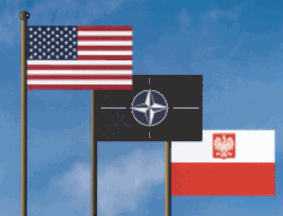 Today Poland has close ties to both the United States and NATO Today Poland has close ties to both the United States and NATO
Bill Clinton played the instrumental role in bringing Poland into NATO and under presidents George H.W.Bush and George W.Bush the very close military collaboration was developed. F-16 are flying in the Polish sky and soon the Patriot batteries will protect the Polish land. Presence of American forces on Polish soil will give the country even better sense of security.
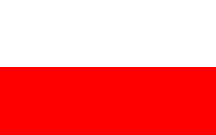
National Poland Flag 1919
|
Rzeczpospolita Polska (Republic of Poland) since 1919
The Polish flag dates back to the pennants of the Middle Ages. At first they were all red with a white eagle, but by the 17th Century the background colors of red and white stripes were firmly established. The banners usually bore the official crest of the State. These Polish national colors were used during the November Uprising of 1831, and the colors were used in all national uprisings since that time. They were officially recognized as state colors in 1919 after Poland had regained her independence as the Second Polish Republic.
Poland was a Communist controlled Satellite Nation of Russia between 1945-1990, but still used the traditional bicolored flag. |
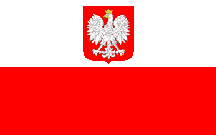
Poland State Flag 1919
|
The Second Polish Republic State Flag 1919-1956
The Third Polish Republic State Flag 1990-present
The state flag of Poland, with the Polish coat of arms, has been in use since 1919. According to one legend, the crown on the Polish flag is not used during times when Poland is under occupation or imposed rule. Therefore, this flag has the Polish crown once again present on the coat-of-arms to symbolize the re-emergence of polish self-rule. A nice myth but it is mostly legend. For example, during the period when the Russian emperor was "King of Poland" and the Prussian king was the "Grand Duke of Posen" (1815-1917) the crown remained. The government imposed by the Russians chose to eliminate the crown, while the Polish government in exile (and its troops in World War II) continued to use the crown. Practically speaking, the Polish eagle without the crown was simply an invention of the Communist regime. |
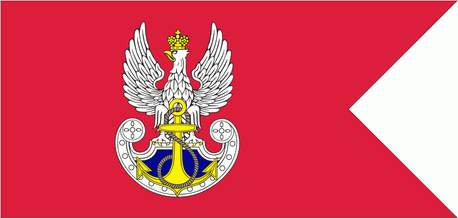
Polish Naval Ensign
|
Third Polish Republic Navy Flag (MW RP)1993
The Polish Navy (Marynarka Wojenna Rzeczypospolitej Polskiej - MW RP) is the branch of Poland's Armed Forces responsible for naval operations. It 2008 it had 60 ships (including 5 submarines, 2 frigates, 1 corvette, 5 missile boats) and about 14,300 commissioned and enlisted personnel. The traditional ship prefix in the Polish Navy is ORP (Ship of the Polish Republic). |
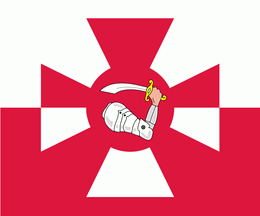
Polish Naval Jack
|
Third Polish Republic Naval Jack 1993
The Polish Navy is one of the bigger navies on the Baltic Sea. It is mostly responsible for Baltic Sea operations. Other duties include search and rescue operations covering parts of the Baltic, as well as hydrographic measurements and research.
Recently the Polish Navy played a more international role as part of the 2003 invasion of Iraq, specifically providing logistical support for the United States Navy. |
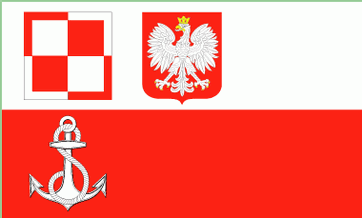
Naval Air Force
|
Naval Air Force flag 1996
The Polish Navy is organized into 2 separate flotillas, and a Naval Air Arm. This is the flag of the Naval Air Arm of the Polish Navy. The Naval Air Force consists mainly of a wide variety of specialized helicopters. They include anti-submarine helicopters, utility helicopters, gunships, transport helicopters, close-combat support helicopters, and command helicopters. They also maintain a number fixed wing patrol and cargo planes. |
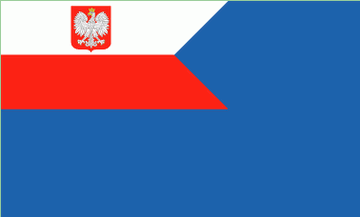
Auxiliary Vessels Ensign
|
Navy - Auxiliary Vessels Ensign 1996
This is the flag used by auxiliary vessels of the Polish Navy. An auxiliary ship is a naval ship which is designed to supporting combat ships and other naval operations. Auxiliaries are not primary combatants, although they may have some limited combat capacity, usually of a self-defensive nature.
The Polish Navy is presently operating about 50 auxiliary vessels including landing craft, salvage ships, survey ships, tankers and training ships. The Navy also has 1 logistic support ship, the ORP Kontradmiral Xavery Czernicki, built in Gdansk. That ship took part in the Afghan and Iraq wars. During operation Enduring Freedom it joined the United States Fifth Fleet in the Indian Ocean. After change of crew it took part in the Iraq invasion. During the invasion the vessel patrolled the Euphratus estuary and served as a floating base for commando operations. |
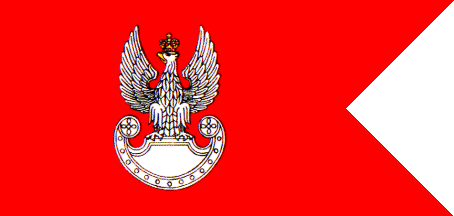
Polish Army Ensign
|
Third Polish Republic Army (RP) Flag 1993
The Polish Army, or more properly, the Polish Land Forces (Wojska Ladowe - RP) are a branch of Poland's Armed Forces. During World War II there were two Polish armies, the First Army and the Second Army that fought with the Red Army on the Eastern Front, and after the war their Soviet overlords build up the Polish army to form part of the Warsaw Pact defense against a possible attack from NATO's Allied Forces in Central Europe.
Following the end of the Cold War the Polish Army has been drastically reduced and reorganized. Today, Poland has been divided into two military districts. These is the Pomeranian Military District (Pomorski Okreg Wojskowy) with HQ in Bydgoszcz, covering northern Poland, and the Silesian Military District (Slaski Okreg Wojskowy) with HQ in Wroclaw, covering southern Poland. |
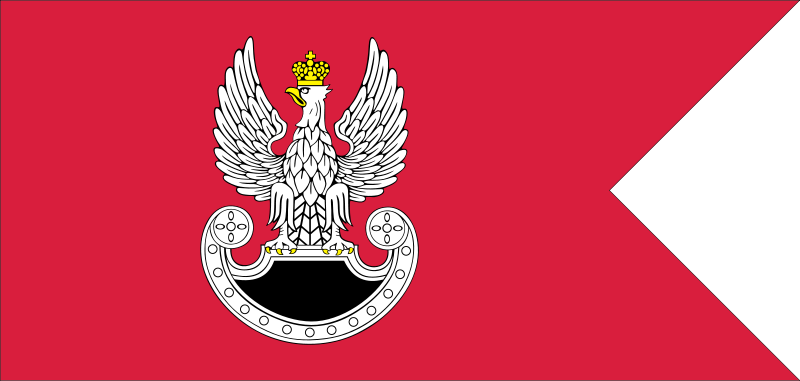
Polish Special Forces Ensign
|
Third Polish Republic Special Forces Flag 2009
Polish Special Forces (Wojska Specjalne Rzeczypospolitej Polskiej) are the 4th branch of Polish Armed Forces formed in early 2007. They are composed of 3 special units and the Special Forces Command
called GROM (Grupa Reagowania Operacyjno Manewrowego) which is based in Warsaw. These troops can be and are deployed in a variety of special operations and unconventional warfare roles, including anti-terrorist actions and projection of power behind enemy lines.
Polish Special Forces units are highly acclaimed by the American Special Forces for their contributions in Bosnia, Haiti, Iraq and now in Afghanistan. |

GROM Standard |
Operational Mobile Reaction Group Standard
(Grupa Reagowania Operacyjno-Manewrowego)"
GROM, an acronym meaning "thunderbolt," is the primary special forces unit of the Polish Land Forces. It was officially activated in 1990. It is deployed in a variety of special operations and unconventional warfare roles, including anti-terrorist actions and working behind enemy lines. It is recognized as one of the best commando-type Special Forces unit in the world.
Besides the rescue of the CIA agents in 1991 in "Operation Desert Storm," GROM participated in the capturing of war criminals in Slavonia and operated in Bosnia and Kosovo, often behind the enemy lines. It took part, with distinction, in "Operation Restore Democracy" in Haiti, and missions in Northern Ireland, Macedonia, and Afghanistan. In 2003, in "Operation Iraqi Freedom," they secured the port of Umm Qasr on the first day of the war of (in tandem with their Navy counterparts, the frogmen of FORMOZA group), an event described by the American military as a "real masterpiece."
Presently, a number of GROM operatives are deployed in Afghanistan, where, presumably, they are assisting the U.S. Special Forces and Delta Forces in taking out the Taliban leaders and the search for Bin Laden. Their existence was known initially only to a very limited number of Polish and American officials. It was revealed to the public only during the operation in Haiti. |
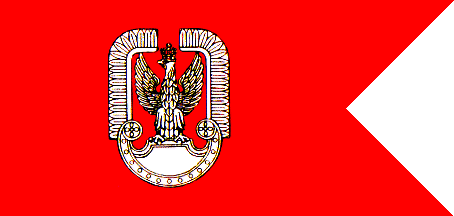
Polish Air Defence Flag
|
Third Polish Republic Air Force (RP) and Air Defence Flag 1993
The Air Forces of the Polish Republic (Sily Powietrzne Rzeczypospolitej Polskiej, Sily Powietrzne RP) is the air force branch of the Polish Armed Forces. Until 2004, it was officially known as Wojska Lotnicze i Obrony Powietrznej (Air and Air Defence Forces). It consists of 17,000 officers and enlisted personnel, distributed among 12 bases throughout Poland. Since 1918 the insignia on Polish Air Force aircraft is a white and red checkerboard, but in 1993 its order of colors was inverted. |
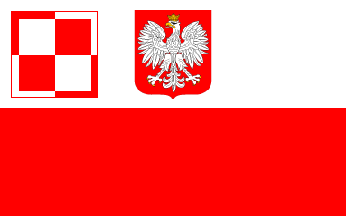
Polish Air Force Ensign
|
Third Polish Republic Air Force Ensign 1996
According to the National Defense Minister this Air Force flag was made official in 1996. This is the flag of the airports (of the landing grounds) of the military forces. The "rondel" is called the Air Force chess board. This flag flies and must be lowered near the commanding office of the permanent and provisory military airports and landing grounds.
There is also a similar flag for navy air ports and landing grounds. It is the same, but has a white anchor under the chessboard on the red stripe. The anchor has a white rope with it. This flag flies near the commanding offices of any permanent or provisory airports (landing grounds) of the navy. |
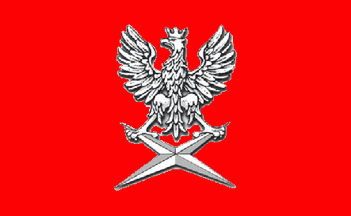
Polish Intelligence Agency
|
Polish Intelligence Agency 2002
In 2002, the new, post-communist left-wing government reorganized the special services by dividing them into two agencies; the Internal Security Agency (Agencja Bezpieczenstwa Wewnetrznego) and Intelligence Agency (Agencja Wywiadu). The move was widely perceived as a way of cleansing the higher ranks of the officers appointed by previous right-wing governments.
The Agencja Wywiadu (AW) is tasked with the gathering of public and secret information abroad, vital for the Republic of Poland. It was created in its newest form in 2002.
|
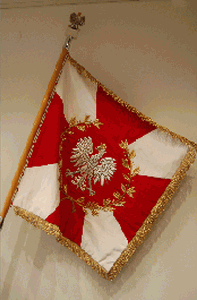
Agencja Wywiadu Standard
obverse (front) side
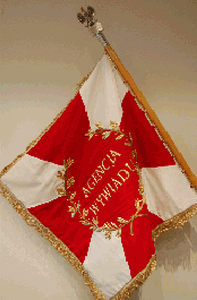
Agencja Wywiadu Standard
reverse side
|
Standard of the Military Information Service 2009
This is the newest flag of the Polish military intelligence agency Wojskowe Sluzby Informacyjne (Military Information Services) whose services date back to before World War II. The new Polish conservative government declared dissolution of the WSI and creating new services in October 2005, since the agency skipped serious external reforms after the collapse of communism in 1989. Throughout the transformation the WSI were allegedly involved in dubious operations, arms sales to UN-sanctioned states and corruption scandals. In 2006 the WSI was split into Sluzba Kontrwywiadu Wojskowego and Sluzba Wywiadu Wojskowego.
The Polish military Intelligence (2nd Section of the General Staff) seldom gets credit for its important and historic work during World War II. They were responcible for breaking the Enigma Code which allowed the Allies to read the German and Japanese secret messages throughout the war. Winston Churchill remarked to King George VI in 1945 that "without breaking the Enigma (code) it wouldn't be possible for us to win this war," and General Eisenhower, also in 1945, called the breaking of Enigma (code) the "decisive factor in winning the war."
In 2006, on the anniversary of the original 1946 Victory Parade in London, the Polish delegation was put in the front of the parade after not being invited to the first one because of Stalin's objections. During the 2006 ceremonies, British Foreign Secretary Jack Straw finally acknowledging publicly the Polish intelligence Agency's supreme role in the breaking the German code machine. He said "we owe a great debt to those Polish mathematicians who broke the Enigma codes, as without it, the forces of democracy would have had a much harder task to conduct and to win the war."
In July 1947, the 2nd Section was joined together with the civilian intelligence agency to become Department VII of Ministry of Public Security. During the communist-era it was called the Sluzba Bezpieczenstwa (SB), which was organized into departments: Departament I of People's Republic of Poland Ministry of Internal Affairs - intelligence; Departament II of the People's Republic of Poland Ministry of Internal Affairs - counter-intelligence, whose responsibilities had additionally included the suppression of opposition to the government prior to 1989.
With the fall of Communism in 1990, the whole Polish Intelligence Agency became known as the Urzad Ochrony Panstwa (UOP - Office for State Protection). It was organized as a department of the Ministry of Internal Affairs. In 1996, it was transformed into a separate government agency under the supervision of the Prime Minister. It was responsible for intelligence, counter-intelligence and government electronic security, including telephone wiretaps.
In June 2002, the agency was split into two separate entities - Agencja Bezpieczenstwa Wewnetrznego (Internal Security Agency), which deals with internal security of the country, and Agencja Wywiadu (Intelligence Agency), which deals with foreign intelligence. This standard of the Agency was adopted just recently, in 2009. It was presented to them by the Organization of the Veterans of the Home Army (AK). The Agency itself, and presumably its flag, existed since 2002, as mentioned above. |
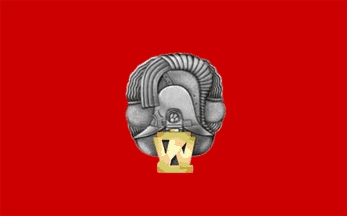
Commander´s Flag
Polish Military Police
|
Commander of the Polish Military Gendarmerie 2010
In July of 2010, this flag was adopted for use by the Commander (Chief) of the Military Gendarmerie (Police) of the armed forces of the Republic of Poland. This flag is used in all Polish Military Police Headquarters and in the office of the Military Commander (Chief of Military Police) himself.
Together with the Army, Air Force and Navy, the Military Gendarmeie are part of the Polish Armed Forces. The Polish Military Gendarmerie have been active in all places that the Polish military forces have served, including Afghanistan, Bosnia and Herzegovina, Chad, Kosovo, Lebanon, and Syria. |

POLUKRBAT (Polish)
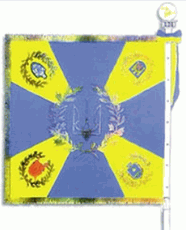
POLUKRBAT (Ukrainian)
Reverse side
|
Polish Organized Multinational Units serving in Nato
These are the banners of other multinational units organized by Poland for the participation in NATO operations in the former Yugoslavia (Bosnia and Kosovo).
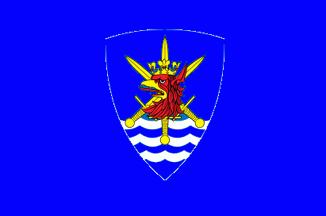 Nato Multinational Corps Northeastern Flag Szczecin Headquarters The second pillar of Poland's security is its membership in NATO. The first multinational unit of NATO is located in Szczecin and composed of German, Danish and Polish forces whose mission is to defend the Baltic Sea region. It is know as the Headquarters of the Allied Multinational Corps Northeast (MNE HQ). Poland participated in all NATO actions, from the former Yugoslavia to Afghanistan, and plays an active role in the pact being also one of the staunchest supporters of admittance of the Ukraine and Georgia, which it considers crucial to its own security as well.
|
|
|
LITPOLBAT (Lithuanian) Standard |
|
LITPOLBAT (Polish) Standard |
|
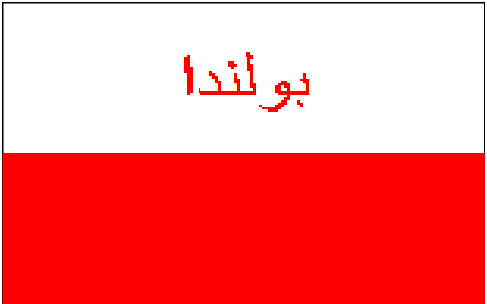
Polish Army in Iraq
|
Polish troops in Iraq 2003
This was the flag used by Polish military forces, both navy and special forces, who participated in Operation Desert Storm in 2001 in Iraq.
It was used again in 2003 in Operation Iraqi Freedom. Poland was one of the invading powers along with the United States, United Kingdom, and Australia. Later, Iraq was divided into four zones: the North and West were under American control, the South under the British, and the South-Central zone was placed under Polish control, where they commanded a multinational division composed of the forces from 17 countries. The Polish contingent was one of the largest in Iraq, totaling 2,500 troops. They suffered 22 casualties and, after accomplishing their mission, 900 Polish military and police personnel have stayed in Iraq to provide the training of the local forces. |
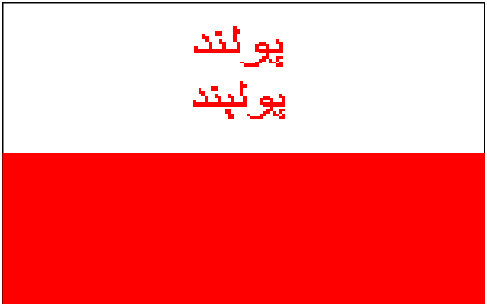
Polish Army in Afghanistan
|
Polish Army in Afghanistan 2005
Presently, the Polish forces are responsible for Ghazni and part of Patika
provinces. They number 2,000 with the additional 1,000 soldiers coming in early 2010, making it one of the largest contributors of troops. Polish forces, although the part of it, are not under NATO command, but rather under direct American command. Besides that, an undisclosed number of the Special Forces operatives of GROM are there with the Americans. As of December 2009, the Poles lost 16 soldiers in combat.
The flags, both, in Iraq and Afghanistan, with the inscriptions in Arabic, Dari
and Pushto, were used sometimes to identify the troops to the locals. |
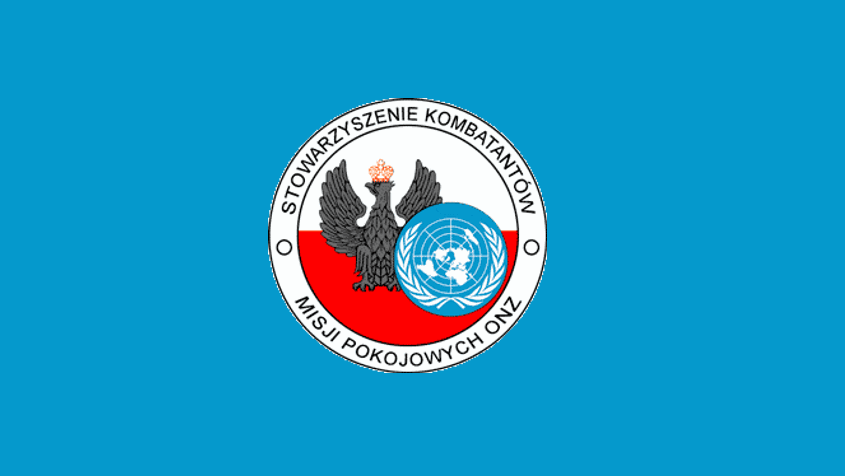
Polish Peacekeeping Veterans
|
Association of Veterans of UN Peacekeeping Missions
The Association of Veterans of UN Peacekeeping Missions was founded in October of 1998. Citizens of the Polish Republic have for many years been involved in peacekeeping missions, stabilization and humanitarian efforts worldwide conducted under the aegis of the United Nations. This association flag honors all those Polish veterans participating in those peace keeping missions for the United Nations.
The flag is UN blue with an emblem in the middle. The circular emblem has a white over red field with a off-center left dark grey Polish eagle and a off-center lower right UN emblem placed over it. In a band circled around the emblem are the words stowarzyszenie kombatantów (on top) and misji pokojowych ONZ (on bottom), which translates as "Association of Veterans of UN Peacekeeping Missions". Indoor versions of the flag have been reported with a silvery-white fringe added. |
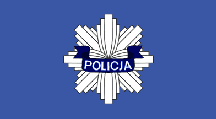
Poland State Police
|
Third Polish Republic State Police Flag
The "flaga Policji" (Police Flag) is flag for National State Police of Poland
Policja is the generic name for the police in Poland. The Polish police force was known as policja throughout the Second Polish Republic (1918–1939), and in modern post-communist Republic of Poland since 1990. Its current size is 103.309 officers and 12.000 civilian employees.
Most towns and some villages have its own City guard, which supervises public order and road safety; however City guard have jurisdiction only over misdemeanors and in cases of crimes may serve only supportive role for the state police. |

State Police Vessel Ensign
|
Third Polish Republic Police Vessel Ensign
This ensign is flown by police vessels patrolling the waterways, rivers, canals, and lakes of Poland by vessels belonging to the National State Police Force. |

Organizations that Poland is active in
and supports 2009
|
Flag of the European Union
The third pillar of Poland's security is the European Union, and while their membership is considered important, the alliance with the United States is predominant, and the ties with NATO ranks higher. |
- My thanks to Chrystian Kretowicz for all his expert help, research, advise, and images used on this page -
| Learn about "The Evolution of the Polish Coat-of-Arms" Here |
| Top of Page | Medieval Poland 900 to 1599 | 17th and 18th Century Poland 1600 to 1795 |
| Alliance of the Three Black Eagles (Poland Partitioned) 1795 to 1807 | Napoleonic Era and Poland 1807-1824 |
| The Congress of Vienna and its Aftermath 1820-1914 | World War I and the Parliamentary Democracy 1914 to 1926 |
| Second Republic of Poland (Sanacja) 1926 to 1939 | World War II (German and Soviet occupation) 1939 to 1945 |
| People's Polish Republic (Communist regime) 1945 to 1999 | Third Republic of Poland 1999 to present |
|
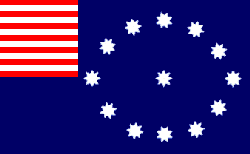

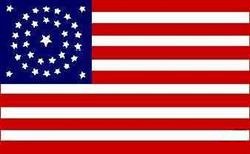
 Today Poland has close ties to both the United States and NATO
Today Poland has close ties to both the United States and NATO

















